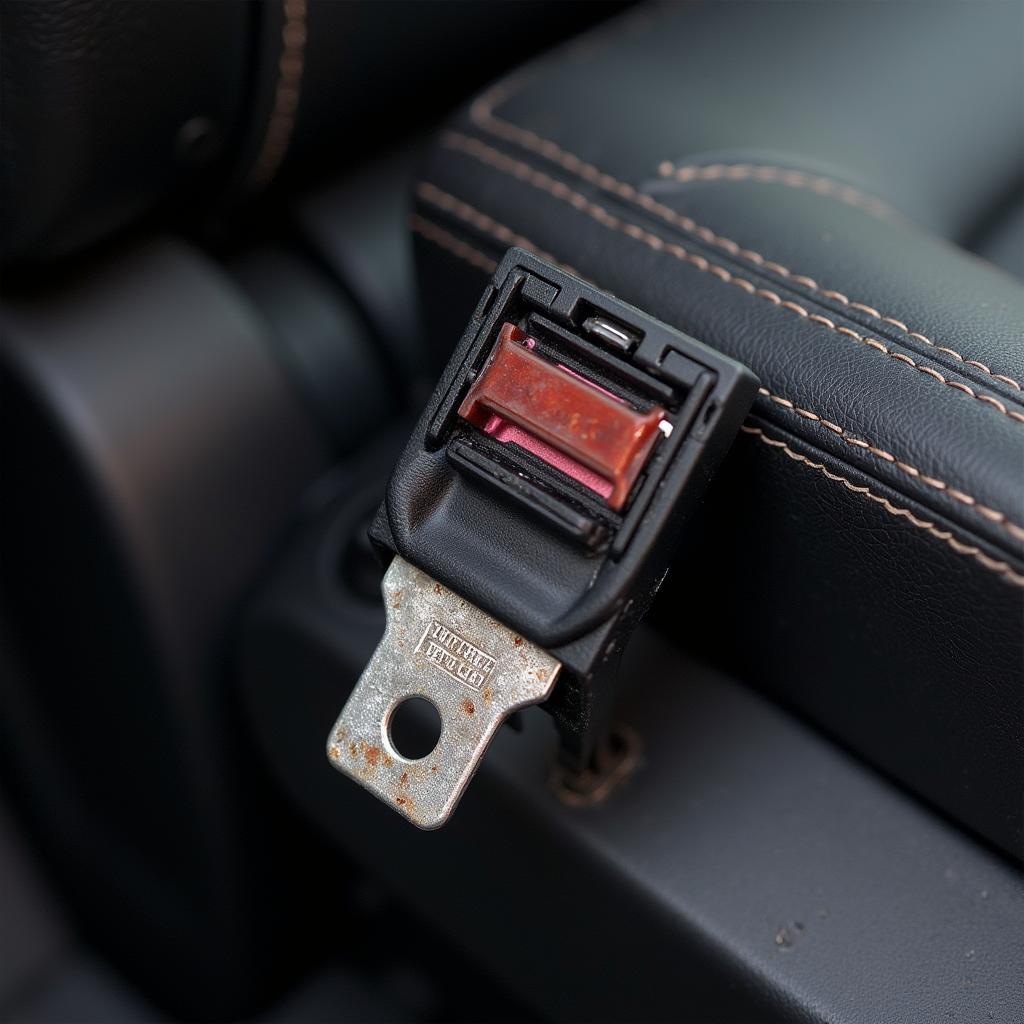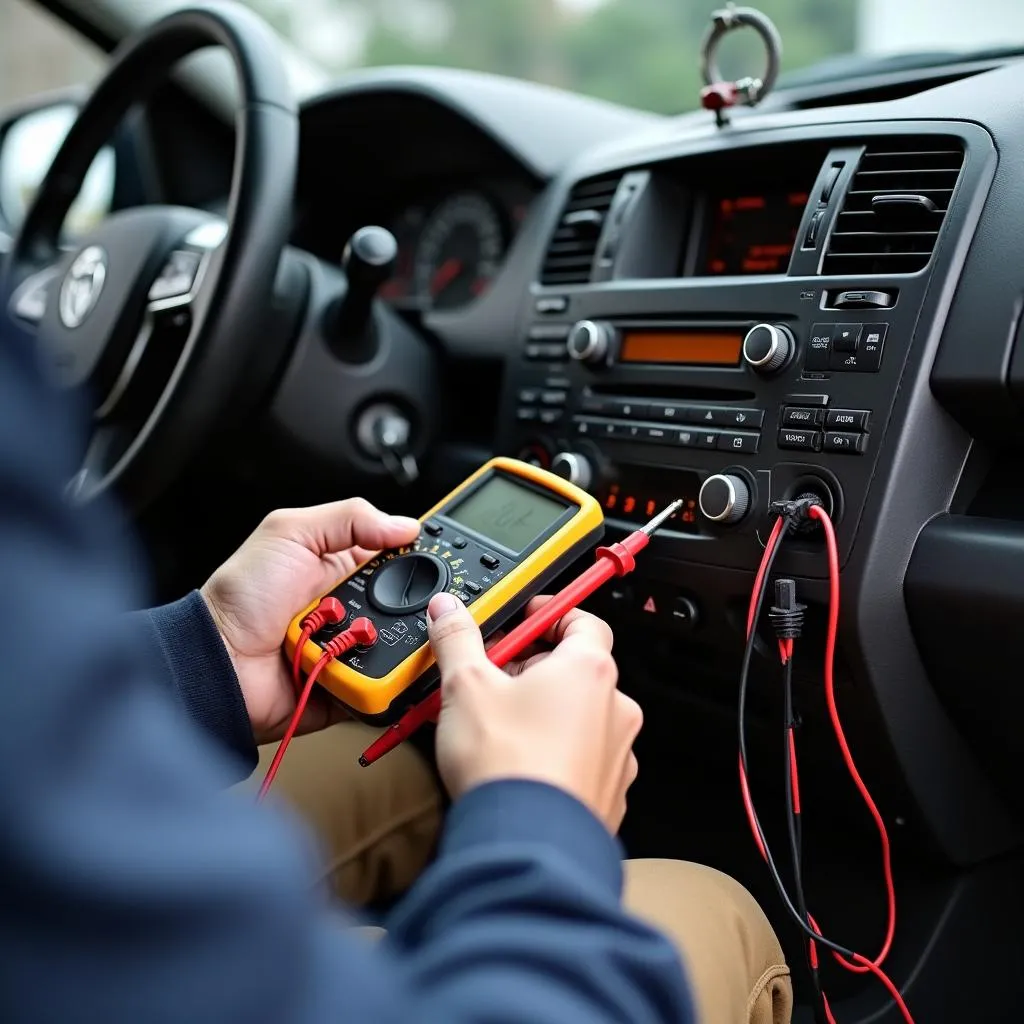The persistent annoyance of a seat belt warning chime that refuses to cease can be a real headache for any driver. This issue, while seemingly minor, can quickly escalate to a frustrating distraction, impacting your focus and driving experience. This comprehensive guide will delve into the common reasons behind a malfunctioning seat belt warning chime stopper and provide effective solutions to help you regain peace and quiet in your vehicle.
Understanding the Seat Belt Warning System
Before we dive into troubleshooting, it’s crucial to grasp the fundamentals of how your car’s seat belt warning system operates. Modern vehicles typically employ a two-pronged approach:
-
Seat Belt Sensor: This sensor, usually located within the seat belt buckle assembly, detects whether the seat belt is fastened. When you buckle up, the sensor sends a signal to the vehicle’s computer system, indicating that you’re properly restrained.
-
Warning Chime Module: Upon receiving a signal from the sensor, the warning chime module remains silent. However, if the sensor fails to detect a fastened seat belt, usually after a predetermined period or distance covered, the module activates the audible warning chime and, in some cases, a visual warning on the dashboard.
Common Causes of a Malfunctioning Seat Belt Warning Chime Stopper
Several factors can contribute to a seat belt warning chime that won’t turn off, ranging from simple glitches to more complex electrical issues. Here are some of the most common culprits:
1. Faulty Seat Belt Buckle Sensor
 Faulty Seat Belt Buckle Sensor
Faulty Seat Belt Buckle Sensor
The most frequent offender is a malfunctioning seat belt buckle sensor. Over time, these sensors can experience wear and tear, exposure to dirt and debris, or even corrosion, leading to inaccurate readings or a complete inability to detect a fastened seat belt.
2. Damaged Wiring Harness
The wiring harness connecting the seat belt buckle sensor to the vehicle’s electrical system can become damaged due to factors like:
- Wear and tear: Constant movement of the seat and belt can fray or break wires within the harness.
- Rodent damage: Rodents often find refuge in vehicles and may chew on wiring, causing shorts or open circuits.
- Improper installation: If any aftermarket accessories or modifications were installed, improper wiring connections could be the root of the problem.
3. Software Glitch in the Warning Chime Module
Modern vehicles rely heavily on software to control various systems, including the seat belt warning chime. Occasionally, glitches in the software controlling the warning chime module can lead to unexpected behavior, like a persistent chime even when the seat belt is fastened.
4. Faulty Warning Chime Module
While less common, the warning chime module itself can malfunction. Internal electrical issues within the module can lead to a continuous chime or prevent the chime from turning off entirely.
Troubleshooting a Persistent Seat Belt Warning Chime
Now that we’ve explored the potential causes, let’s delve into troubleshooting steps you can take to resolve the issue:
1. Check the Basics
Before delving into complex diagnostics, start with the simplest solutions:
- Ensure the Seat Belt is Properly Latched: It may seem obvious, but double-check that the seat belt is securely fastened and that there are no obstructions preventing it from clicking into the buckle.
- Inspect the Buckle for Debris: Foreign objects like coins, dirt, or small items can lodge within the buckle, interfering with the sensor’s operation. Use a small brush or compressed air to clean the buckle thoroughly.
- Try Reconnecting the Buckle: Sometimes, a simple disconnect and reconnect of the buckle can resolve minor connection issues. Carefully detach and reattach the buckle, ensuring a firm connection.
2. Visual Inspection of the Wiring
If the basic checks yield no results, proceed to a visual inspection of the wiring harness:
- Examine the Visible Wiring: Follow the wiring harness from the seat belt buckle towards its connection points under the seat and look for any signs of damage, such as cuts, fraying, or exposed wires.
- Check for Loose Connections: Ensure that all connections along the wiring harness are secure and free from corrosion.
 Inspecting Wiring Harness for Damage
Inspecting Wiring Harness for Damage
3. Advanced Diagnostics and Solutions
If the issue persists after the initial checks and inspection, it’s advisable to seek professional assistance. Experienced automotive technicians equipped with diagnostic tools can pinpoint the exact cause and recommend appropriate solutions.
-
Diagnostic Scanning: Technicians can connect a diagnostic scanner to your vehicle’s onboard computer system to read fault codes related to the seat belt warning system. These codes provide valuable insights into the specific area of malfunction.
-
Component Testing: Using specialized equipment, technicians can test the functionality of the seat belt buckle sensor, wiring harness, and warning chime module to identify the faulty component.
-
Software Update or Reprogramming: If a software glitch is detected, a software update or reprogramming of the warning chime module may be necessary.
-
Component Replacement: In cases of confirmed component failure, replacement of the faulty part, whether it’s the seat belt buckle sensor, wiring harness, or warning chime module, will be necessary.
Expert Insight
“Many drivers attempt DIY fixes for a persistent seat belt chime, but it’s crucial to remember that tampering with safety systems can have unintended consequences,” cautions John Miller, a seasoned automotive electrician with over 20 years of experience. “While simple checks are worthwhile, addressing complex electrical issues is best left to professionals to ensure your vehicle’s safety systems function correctly.”
Conclusion
A persistent seat belt warning chime can be a nuisance, but understanding the potential causes and following the troubleshooting steps outlined in this guide can help you regain a peaceful driving environment. Remember, while some solutions are within the realm of DIY, seeking professional assistance from qualified automotive technicians is crucial for diagnosing and resolving more complex issues to ensure the proper functioning of your vehicle’s safety systems.
FAQs
1. Can I simply disconnect the seat belt warning chime?
While possible, disconnecting the chime is not recommended. It compromises your safety and could be illegal in some jurisdictions.
2. How much does it cost to fix a seat belt warning chime problem?
The cost varies depending on the underlying cause. Simple fixes like buckle cleaning or sensor replacement might cost under $100, while module replacement could exceed $200.
3. Can aftermarket seat covers interfere with the seat belt sensor?
Yes, bulky or improperly installed seat covers can obstruct the buckle sensor, leading to a false warning chime. Ensure your seat covers are compatible and properly fitted.
4. My chime goes off even when I’m not in the car; what could be wrong?
This suggests an electrical fault, possibly a short circuit in the system. Professional diagnosis is recommended.
5. Does the seat belt warning system affect my car’s airbag deployment?
While connected, the systems operate independently. However, a malfunctioning seat belt system might indicate broader electrical problems that could affect other safety features.

